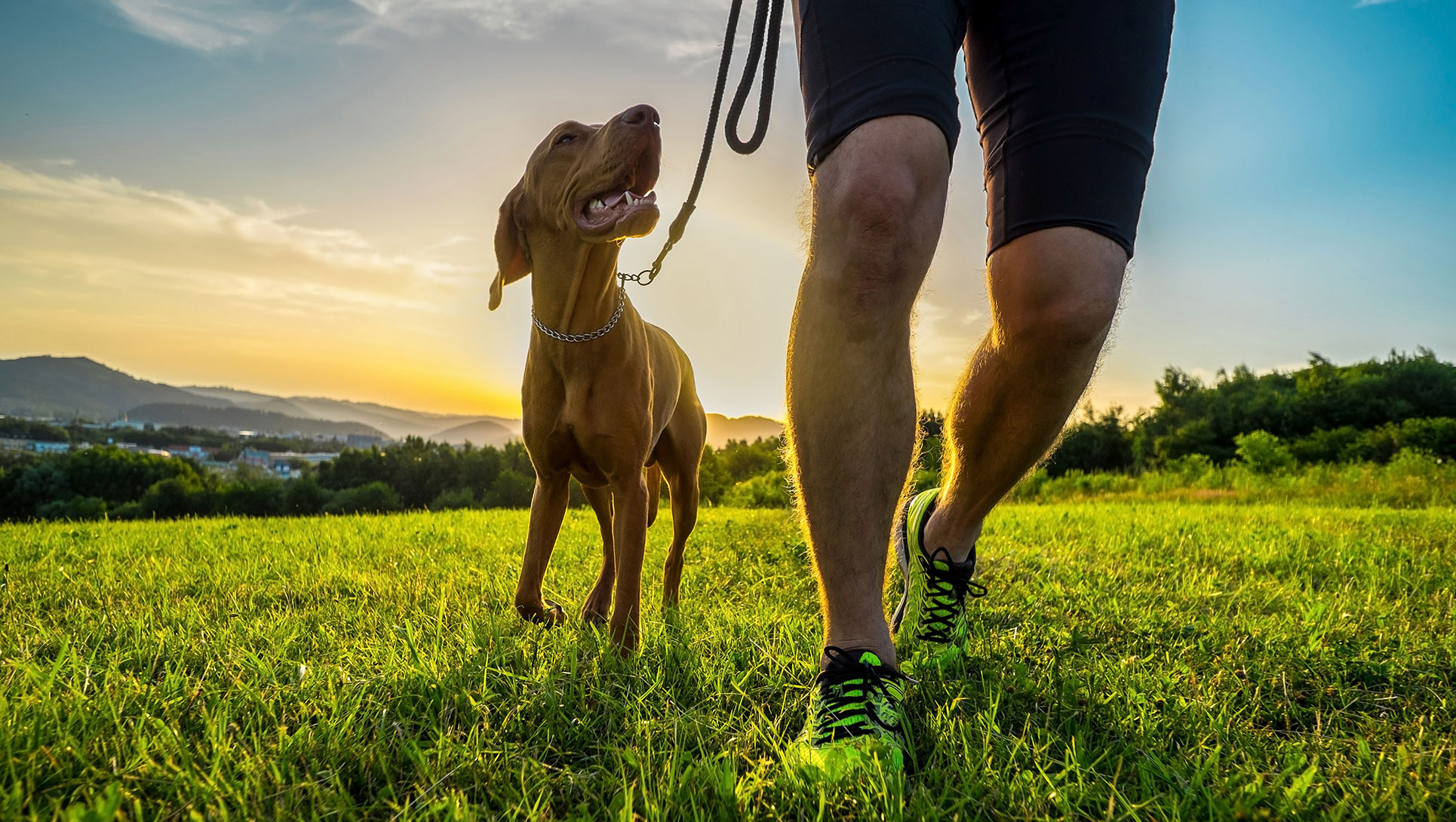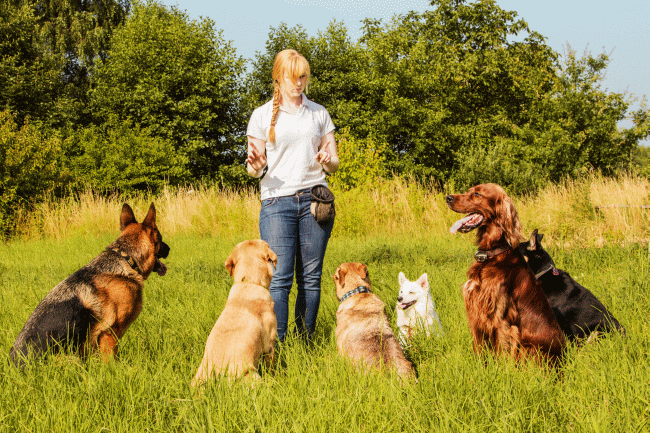Quality Puppy Training for a Happy, Obedient Dog with Professional Help
Quality Puppy Training for a Happy, Obedient Dog with Professional Help
Blog Article
Top Pet Dog Educating Techniques Every Proprietor Should Know
Among the most noticeable methods are favorable reinforcement, remote control training, and chain training, each offering special benefits that contribute to a well-behaved canine. As we discover these fundamental strategies, it becomes obvious that grasping their subtleties can considerably influence the training experience and the pet's total behavior.
Positive Reinforcement Methods
Making use of favorable support methods is essential for efficient canine training, as it cultivates a trusting bond between the canine and the instructor. This approach concentrates on gratifying preferable habits as opposed to punishing undesirable ones, creating an environment for discovering. Incentives can include deals with, praise, or playtime, which motivate pet dogs to duplicate the habits that gain them these incentives.
Positive support is rooted in the concepts of operant conditioning, where actions is influenced by its effects. By constantly gratifying certain actions, trainers can form a canine's habits gradually. For example, a canine that rests on command and receives a reward is most likely to duplicate that behavior in the future.
Moreover, this strategy enhances the pet's interest for training sessions. They are more engaged and responsive when pets connect training with positive experiences. Past immediate therapy, favorable support motivates a collective connection in between the canine and instructor, minimizing anxiety and worry.
To make best use of performance, it is vital to provide incentives quickly, making certain the pet attaches the actions with the support. Basically, positive support strategies not just yield better-trained pets but also advertise an unified collaboration between dog and proprietor.
Remote Control Training Method
The remote control training approach is an extremely effective strategy that builds on the concepts of positive support by adding an unique audio to mark wanted habits. This technique utilizes a small handheld device that creates a clicking sound, enabling trainers to interact with their pets in a immediate and clear manner. When a canine performs an actions that the proprietor wishes to motivate, the clicker is triggered, followed by an incentive, usually in the form of treats or appreciation.
The key to successful remote control training hinges on consistency and timing. It is important to click at the precise moment the desired actions takes place, making certain that the canine links the noise with the action and the succeeding reward. This method not only enhances communication yet likewise fosters a more powerful bond in between the canine and the proprietor, as it encourages involvement and communication during training sessions.
Remote control training can be put on a variety of habits and commands, from basic obedience to more intricate techniques. Its convenience and performance make it a favored strategy among professional instructors and pet dog owners alike, leading the way for a receptive and trained canine friend.

Chain Training Fundamentals
Reliable chain training is crucial for guaranteeing a risk-free and enjoyable walking experience for both dogs and their proprietors. Leash training need to start early and be come close to with persistence and consistency (Dog training). Start by picking an appropriate chain and collar or discover this info here harness. A flat collar may function for some pets, while others might gain from a harness that reduces pulling.
Introduce your dog to the chain slowly, permitting them to explore it in a comfy environment. Once they are accustomed, technique loose-leash strolling. This involves fulfilling your pet dog for walking close to you rather than pulling in advance. Use treats and appreciation to strengthen desired behavior, and make certain to continue to be tranquil and assertive.
If your canine starts to draw, quit strolling quickly. Wait up until they go back to your side prior to resuming. This instructs them that drawing does not cause progress. Furthermore, method numerous walking atmospheres to help your canine adjust to distractions.
Routine method will strengthen your canine's understanding of chain rules. Keep in mind that chain training is a continuous process; patience and consistency will certainly generate the most effective results, promoting a favorable experience for both you and your canine buddy.
Socializing Strategies
Socializing is an essential facet of dog training that must ideally start throughout puppyhood but can be valuable at any type of age. Efficient socializing aids pets establish confidence and lowers the likelihood of behavior problems. To apply effective socializing approaches, expose your pet to a selection of atmospheres, people, and other pets.

Beginning with controlled settings, such as pup courses or organized playgroups, where young pet dogs can interact securely. Progressively present your pet to new experiences, consisting of various sounds, surface areas, and activities. Guarantee these encounters are satisfying and positive to develop a complacency.
For adult canines or those lacking direct exposure, start with low-stress situations. Short, favorable communications with friendly go to these guys human beings and tranquil dogs can produce favorable organizations - Dog training. Make use of deals with and praise to enhance desirable actions during these experiences
Monitoring your canine's body language is important; indicators of concern or hostility ought to be attended to promptly, either by removing the canine from the scenario or redirecting its focus. Continually subjecting your canine to diverse stimulations will foster versatility, making it an all-round companion capable of flourishing in different setups.
Consistency and Perseverance
Recognizing the importance of uniformity and perseverance in pet dog training is crucial for accomplishing lasting results. Training a dog is a steady procedure that like this needs a structured approach and unwavering commitment from the owner. Each command or habits must be enhanced regularly to help the pet dog recognize what is anticipated of them. Irregular training can cause confusion, making it tough for the canine to understand commands or habits, eventually hindering progression.
Canines, like people, find out at their very own pace. This promotes a relying on partnership between the pet dog and owner, motivating a much more enthusiastic and eager learner.
To grow uniformity and persistence, develop a routine training routine, use the exact same commands, and guarantee that all relative use the exact same training concepts - Dog training. By doing so, you develop a stable environment helpful to finding out, enabling your pet dog to create and flourish into a well-behaved companion

Verdict
In conclusion, effective pet dog training methods, such as favorable reinforcement, clicker training, and correct chain training, are vital for fostering a healthy and balanced owner-dog connection. Additionally, applying socialization strategies and keeping uniformity and persistence throughout the training procedure adds considerably to a dog's general well-being. By incorporating these approaches, canine proprietors can promote the growth of well-adjusted, obedient family pets, ultimately improving the lifestyle for both the proprietor and the canine.
Amongst the most noticeable techniques are favorable support, remote control training, and chain training, each offering distinct benefits that add to a mannerly canine. As we explore these essential techniques, it comes to be noticeable that understanding their subtleties can significantly affect the training experience and the pet dog's total actions.Utilizing positive reinforcement methods is necessary for effective canine training, as it cultivates a relying on bond between the instructor and the canine.In verdict, efficient pet dog training methods, such as favorable support, remote control training, and appropriate leash training, are important for promoting a healthy and balanced owner-dog connection. By incorporating these methods, pet proprietors can promote the growth of well-adjusted, obedient family pets, inevitably enhancing the quality of life for both the proprietor and the pet.
Report this page